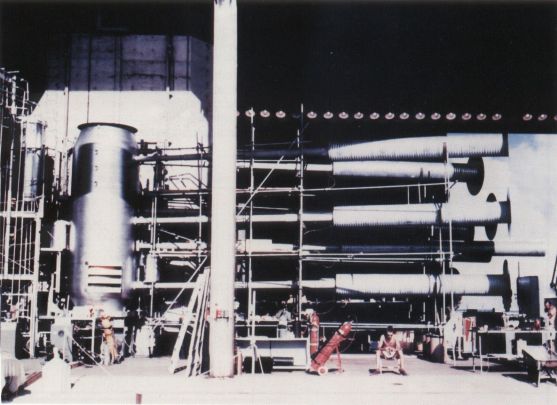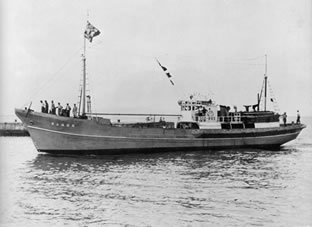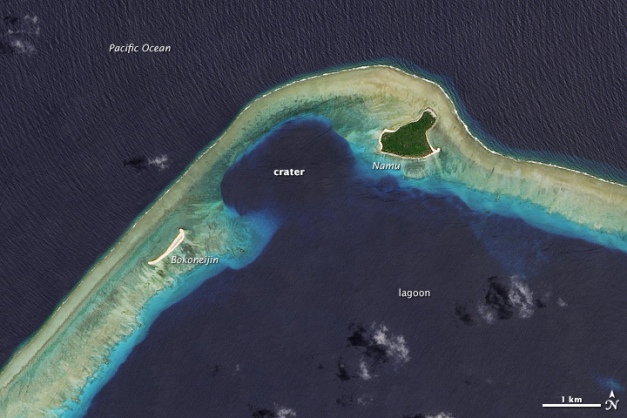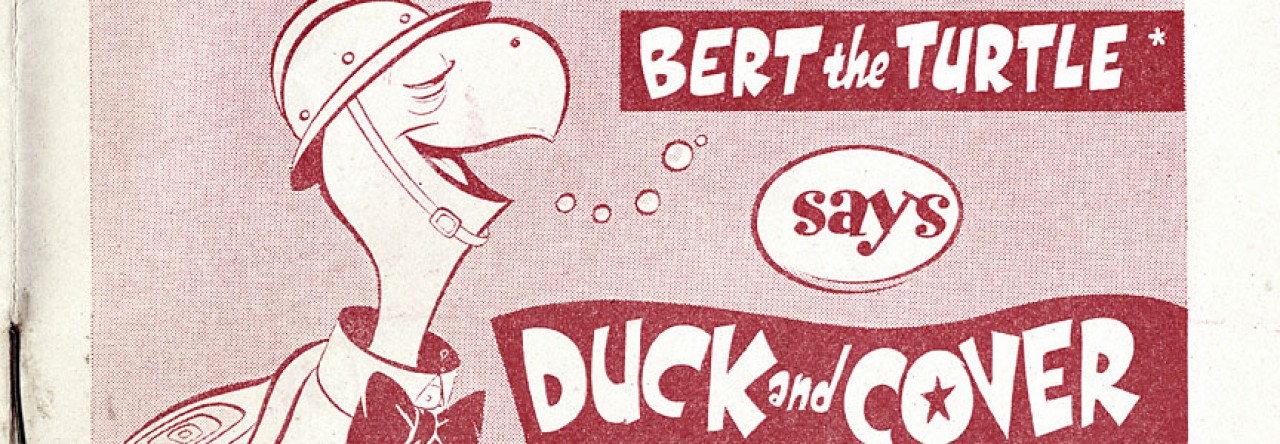In the early 1950s, both the Soviet Union and the United States were conducting numerous atmospheric (above ground) nuclear tests. By 1952, the United States detonated the world’s first hydrogen (thermonuclear) bomb, code named “Ivy Mike.” The bomb detonated with a yield of 10 megatons (10 million tons of TNT), however the bomb was too physically large to be considered operational. The entire device weighed over eighty tons and a separate building had to be constructed to house the device.

However, in 1953, the Soviet Union conducted a test of their own thermonuclear device, and most importantly, it was small enough to be deliverable by aircraft.[1] As the nuclear arms race of the Cold War continued, the Soviet Union and the United States continued to detonated larger and large bombs. In March 1954, the United States detonated the largest thermonuclear weapon in its history: “Castle Bravo.” It had a predicted yield of six megatons (six million tons of TNT), but due to a miscalculation, the bomb detonated with a force of fifteen megatons (approximately one thousand times more powerful than the Hiroshima bomb.) It subjected many of the personnel involved in the test to excessive levels of radiation, along with subjecting the crew of a Japanese fishing boat, the Lucky Dragon, to a fatal dose of radiation.[2]

https://www.wagingpeace.org/tag/nuclear-testing/)
The widespread radioactive contamination from Castle Bravo caused a widespread concern over the effects of atmospheric nuclear testing. By February of the following year, numerous newspapers released articles detailing the new fear of radiation. However, the news articles did not describe how long bombed areas would remain radioactive or any of the long-term, cancer causing effects of radiation. A New York Times article on March 12 explained that, “twenty-eight Americans and 236 natives were ‘unexpectedly’ subjected to ‘some radiation’ during the recent atomic test in the Marshal Islands but all those exposed were reported well.”[3] The Los Angeles Times, warned, “Fallout from hydrogen bomb tests in the Pacific may be blanketing the West-and the entire nation-with longer and stronger effects than ever before.”[4] The Atomic Energy Commission (AEC) made it clear that the majority of casualties caused by an atomic attack would be caused from people not taking the proper precautions, such as building fallout shelters, rather than from fallout. As before, an atomic attack was dangerous, but survivable.
For many years, the illusion that a nuclear attack was survivable was maintained. To be sure, it would have been inconceivable for the U.S. military to understand the long term effects of radiation when they would not be exhibited for twenty or thirty more years. However, the short term health effects of radiation became clear when the local inhabitants of the Marshall Islands living downwind of the test began to exhibit symptoms of acute radiation poisoning. Within years, birth defects began to be exhibited in children born to the islanders (For a clear illustration of these effects, do a Google Search for “jellyfish babies.” I will not post those pictures here, as they are very, very graphic. You have been warned).
Not until 1968 were the islanders of the Marshall Islands invited to return to their homes, with President Lyndon Johnson insisting that the islands were safe for habitation. However, due to the long-term effects of radioactive fallout, many of the plants and animals remained highly radioactive. As the native inhabitants of Bikini realized that their homeland was not safe, many islanders questioned and distrusted the deception of the U. S. government. In 1975, many of the islanders filed suit against the government. At this point, the Atomic Energy Commission was forced to admit that the bomb tests caused severe long term effects. Several millions of dollars of compensation began to be dispensed annually.[5] For many, however, this compensation is not sufficient.

http://earthobservatory.nasa.gov/IOTD/view.php?id=83237)
Today, locals continue to suffer from health problems and birth defects. Parts of the islands remain radioactive, and those islanders that are able to return desire not to, out of fear of radiation. Furthermore, the islanders have no way to end the cycle of poverty that they find themselves in. Alcoholism is rampant and many commit suicide as they see no way out.[6]
[1] Thomas Reed and Danny Stillman, The Nuclear Express: A Political History of the Bomb and Its Proliferation (Minneapolis: Zenith Press, 2010), 36.
[2] Spencer Weart, The Rise of Nuclear Fear (Cambridge: Massachusetts: Harvard University Press, 2012), 98.
[3] “264 Exposed to Atom Radiation After Nuclear Blast in Pacific,” New York Times, March 12, 1954, 1.
[4] “H-Bomb Radiation May Be Blanketing Nation,” Los Angeles Times, May 16, 1954, 17.
[5] Costandina Titus, Bombs in the Backyard: Atomic Testing and American Politics (Las Vegas: University of Nevada Press, 1986), 98.
[6] Dan Zak, “A Ground Zero Forgotten,” Washington Post, accessed March 27, 2016, http://www.washingtonpost.com/sf/national/2015/11/27/a-ground-zero-forgotten/.
